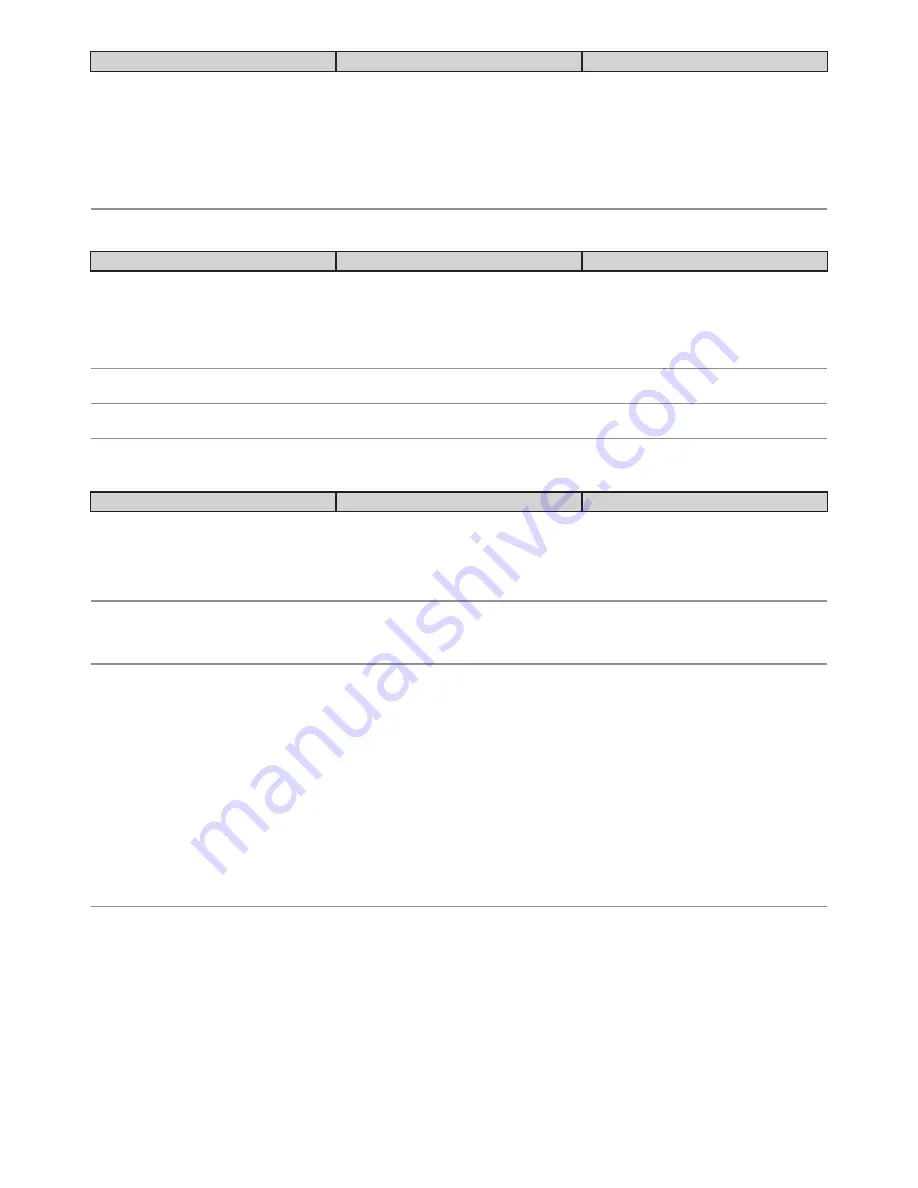
73
VMBMA602
Cause
Troubleshooting
Remedy
5. Circulation noise (whistling noise in the
heating system).
Check the heating system.
• Closed valves, choke valves, adjuster
valves or other restrictions in the radiator
system can cause circulation noise.
• Is the heating system correctly adjusted
for flow?
• Too great a flow in the heating system can
cause circulation noise.
If the incorrect type of valve is used to
choke the flow, replace with the correct
type.
If the heating system is not correctly adjust-
ed, make adjustments.
Can the heating system be run at a lower
flow?
Problem – Loud compressor noise
Cause
Troubleshooting
Remedy
1. Phase drop.
The compressor attempts to start or oper-
ates on two phases.
1. Check that there is 400 V between incom-
ing phases on the heat pump.
2. If there is supply to the heat pump, meas-
ure the voltage for all electrical components
all the way to the compressor, see wiring
diagram.
Check where the phase drop is and rectify.
2. Touching pipes – vibrations.
Establish which pipe(s) is/are causing the
problem.
Try to release any tensions that cause the
vibrations.
3. Compressor fault.
Determine whether the compressor is unu-
sually loud.
If the compressor is defective, replace it.
Problem – Shrieking whistling noise
Cause
Troubleshooting
Remedy
1. Whistling expansion valve.
1. Take overheating readings, adjust to the
recommended value.
2. Open and close the valve fully in and out.
3. Adjust the expansion valve to recom-
mended overheating value again.
Check if the noise has stopped, if not, con-
tinue with point 2.
Continue with point 3.
If the problem persists, replace the expan-
sion valve.
2. Noise from the soft-starter.
Measurement check the input and output
phases for the soft-starter as well as the
control signals from the control computer,
see wiring diagram.
If the soft-starter is defective, replace it.
3. The compressor’s IPR valve opens.
The compressor has an integrated IPR valve
that opens at 28 ±3 bar.
When the valve opens, pressure equalizes
between the compressor’s high and low
pressure side and a milling/whistling sound
is heard.
To establish whether the valve opens at the
correct pressure, connect a manometer on
the high and low pressure side.
When the valve opens, this is indicated by
the pressure on the low pressure side rising
and reaching the pressure on the high pres-
sure side.
Check at what pressure the valve starts to
open.
If it opens at a too low pressure, replace the
compressor.
Summary of Contents for DHP-H
Page 1: ...VMBMA602 Installation and Service instructions DHP H DHP L DHP A DHP AL DHP C...
Page 95: ......
Page 96: ......






























